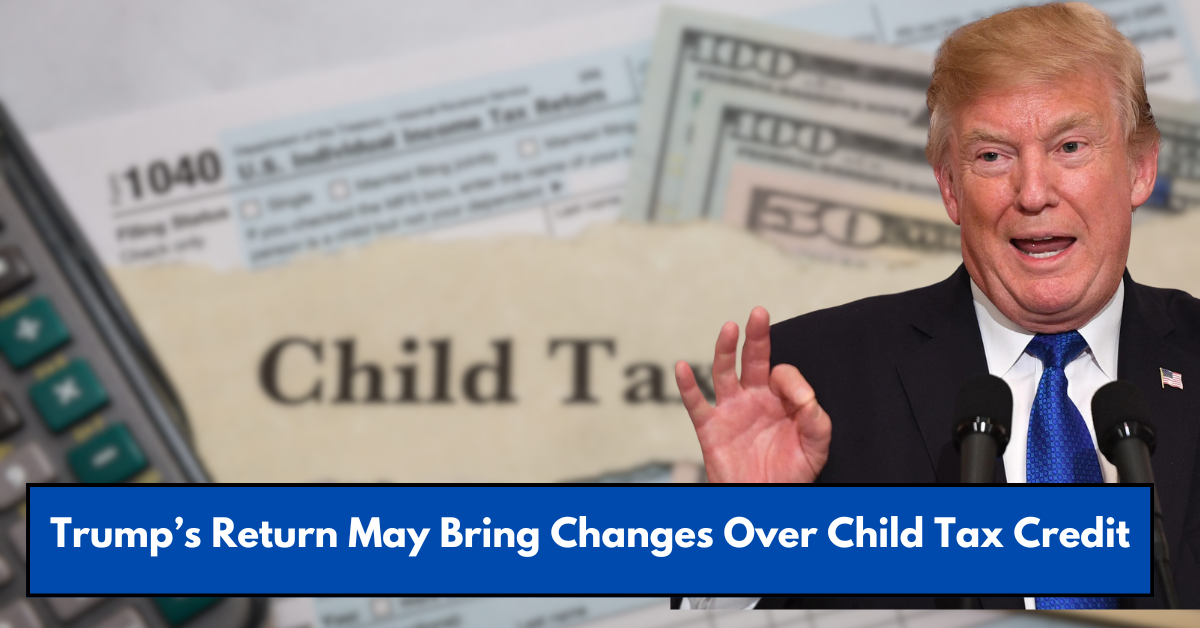The Child Tax Credit is an essential financial support for millions of families in the United States. However, with the return of Donald Trump as president and his prior Tax Cuts and Jobs Act (TJCA) of 2017 set to expire in 2026, families are now facing uncertainty about its future. Here, we break down the possible changes, implications, and what families should prepare for during this transition.
What is the Current Status of the Child Tax Credit?
The Tax Cuts and Jobs Act of 2017 increased the child tax credit to $2,000 per eligible child under the age of 17. This was a significant boost from the earlier cap of $1,000 per child before 2017. However, the expanded credit is set to revert to its earlier $1,000 limit by the end of 2025 unless Congress takes action.
For families who rely on this benefit, this could mean losing half of the current tax credit for each eligible child. This potential reduction has raised concerns, especially in the face of rising costs for childcare, groceries, and housing.
Trump’s Approach and Uncertainty
When Donald Trump was last in office, his administration passed the TJCA, which temporarily raised the child tax credit. However, this legislation has a sunset clause, meaning it will expire if no new laws are passed to extend or modify it.
There is bipartisan support to maintain the child tax credit at its current level of $2,000 per child. However, without definitive action from Congress, families may need to adjust their financial planning to prepare for reduced tax benefits starting in 2026.
Why the Child Tax Credit is Important for Families
The child tax credit helps over 40 million families in the U.S. each year. This financial assistance reduces the pressure on families, particularly those raising young children.
Margaret Marple, a stay-at-home mother from Virginia, emphasized during a House Committee hearing how this credit impacts everyday life. She explained that it helps families afford basic necessities like food and childcare while allowing parents to contribute to the stability of the nation by raising children.
However, despite its importance, many families—particularly those in low-income brackets—do not receive the full benefit due to limitations on the refundable portion of the credit.
Could Low-Income Families Be Affected the Most?
One of the criticisms of the current child tax credit is that it disproportionately benefits higher-income families. Under the TJCA, the refundable portion of the credit was capped, limiting how much lower-income families could claim if they owed little to no taxes.
A report by the Tax Policy Center projects that 17 million children from low-income families could lose access to the full child tax credit by 2025 if Congress does not act. This would leave these families more vulnerable as they already face rising costs for childcare and education.
Bipartisan Push to Extend the Child Tax Credit
Despite political divides, there is broad recognition of the importance of the child tax credit. Lawmakers from both parties have expressed interest in extending the benefit to ensure families continue to receive support.
In January 2024, a bipartisan tax package was introduced in the House of Representatives. This proposal aimed to expand the child tax credit, retroactively adjusting benefits for 2023 and increasing the refundable portion. However, the legislation was stalled in the Senate over policy concerns.
While Senate Republicans have shown some willingness to discuss future adjustments, growing concerns about the federal budget deficit have made the issue more complex.
Rising Costs Add Pressure to Families
As costs for basic necessities continue to rise, families are feeling the pinch. Groceries, childcare, and housing expenses have increased significantly in recent years.
Child poverty remains a critical issue in the United States, with over one in six children living below the federal poverty line. The youngest age groups, including children under five, are the most vulnerable to poverty and eviction.
For families struggling to make ends meet, the child tax credit is more than just a tax benefit—it is a lifeline.
What Could Families Expect Moving Forward?
If no action is taken to extend the 2017 tax law provisions, the child tax credit will return to its pre-TJCA limit of $1,000 per child by 2026. This could have a significant financial impact on families, particularly those with multiple children.
Families should consider adjusting their tax withholding or estimated tax payments to prepare for this potential change. Additionally, they can stay updated by following announcements from Congress and advocacy groups pushing for an extension of the credit.
Final Thoughts
The child tax credit is a critical part of financial support for millions of families across the United States. While there is bipartisan agreement on the importance of the credit, the looming expiration of the 2017 TJCA provisions adds uncertainty. Families should remain vigilant, monitor updates, and prepare for potential changes in the coming years.
This article has been carefully fact-checked by our editorial team to ensure accuracy and eliminate any misleading information. We are committed to maintaining the highest standards of integrity in our content.
Filza specializes in simplifying financial topics for everyday readers. Whether breaking down Canada’s tax guides or U.S. benefits like SNAP and VA Disability, Filza’s relatable writing style ensures readers feel confident and informed. Follow her insights on LinkedIn or reach out via email at shewrites.health@gmail.com.
